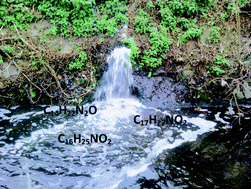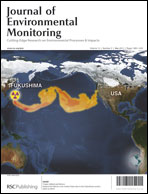Impact of wastewater treatment plant discharge of lidocaine, tramadol, venlafaxine and their metabolites on the quality of surface waters and groundwater
Abstract
The presence of the anesthetic lidocaine (LDC), the analgesic tramadol (TRA), the antidepressant venlafaxine (VEN) and the metabolites O-desmethyltramadol (ODT) and O-desmethylvenlafaxine (ODV) was investigated in wastewater treatment plant (WWTP) effluents, in surface waters and in groundwater. The analytes were detected in all effluent samples and in only 64% of the surface water samples. The mean concentrations of the analytes in effluent samples from WWTPs with wastewater from only households and hospitals were 107 (LDC), 757 (TRA), 122 (ODT), 160 (VEN) and 637 ng L−1 (ODV), while the mean concentrations in effluents from WWTPs treating additionally wastewater from pharmaceutical industries as indirect dischargers were for some pharmaceuticals clearly higher. WWTP effluents were identified as important sources of the analyzed pharmaceuticals and their metabolites in surface waters. The concentrations of the compounds found in surface waters ranged from <LOQ to 176 (LDC), 381 (TRA), 261 (ODT), 122 (VEN) and 743 ng L−1 (ODV) and were dependent on the concentrations of the compounds in the WWTP effluents, the proportion of wastewater in the recipient water, the mean flow rate of the surface water, and the proximity of the sampling point to the WWTP discharge point. The dependence of the concentrations of the target compounds in the surface water on the distance between the sampling points and the points of WWTP discharge into the recipient rivers and streams indicates possible degradation of the compounds in the surface waters. Infiltration of the target analytes into groundwater was not observed.


 Please wait while we load your content...
Please wait while we load your content...